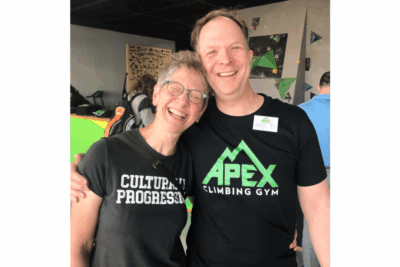This past week The New Yorker celebrated 100 years. For context, The Record will celebrate its 113th birthday this year. Just a lowkey flex. Anyway.
In their celebratory edition, Jill Lepore, a staff writer, wrote an article titled, “The Editorial Battles That Made The New Yorker.” It takes a deep dive into the relationships between various editors and writers over the history of the magazine.Reading it was overwhelmingly validating, from the standpoint that it affirmed something that I’ve experienced and observed in my time working with The Record — the relationship between writers and editors is a tenuous one.
I remember the first piece I ever wrote for The Record, as a first-year taking Writing for Media. While introducing our first news story assignment for the class, Duane Stoltzfus, the professor, mentioned that if an article was good enough it might even get published in The Record. I wasn’t going to sit by and leave that up to chance, so I made sure I chose a topic that the then editor, Greta Lapp Klassen, couldn’t pass up.
So I wrote about Girl Named Tom. They had just blown up with their debut on “The Voice,” and they were coming to Goshen College. I set out getting my interviews, doing my research and putting together what I thought was a great story.
The Record picked it up, and ran it above the fold on the front page — an honor that I received not because I deserved it, but because I had weaseled my way into it.
I was so excited to go look at my article in print the next morning, but to my horror it was different! The lede had been rewritten, paragraphs were moved around, some of the transitions were different — it had been edited.
I don’t remember being a real pain about the edits, but I was not thrilled. Over the years, I’ve heard from other first time writers, aghast at the state of their article, going through a timeless rite of passage that stretches from college newspapers to The New Yorker.
However, many of them continue to write, and eventually get sucked into working as an editor, doing the same thing to others that they once swore they would never do. Ultimately, this is a good thing, because we need more media that goes through an editor.
In her article, Lepore brings up the fact that 100 years ago, everything that was published, other than live sports, would have gone through an editing process. Assuming the quality of editors, everything that was published for the masses would have been checked and double checked to ensure it was fair and accurate. If you fast forward to today, anyone can say anything without another person reading it, thanks to social media.
Now don’t get me wrong, I loved X (Twitter) up until recently, and I’m a big fan of Substack, but the trap of reading something and taking it for the gospel truth is so easy to fall into, even as someone who thinks about these things. It’s so easy to never question anything, to just trust what you’re reading, but in 2025 the vast majority of the things we read never sees an editor.
On top of that, some of the things that do see an editor, still should be evaluated critically. It’s exhausting to have to be on the lookout all the time, but it’s the reality of our world.
The temptation is to bury our heads in the sand when it comes to the news. But I encourage you to try to find edited content from sources you can trust, and stay up to date with the world, even though it takes more effort than Twitter.




